I'm trying to get an RF transmitter/receiver pair from digikey to work with my Arduino Uno/Mega ADK. But it seems neither the transmitter nor the receiver example are working with any of my Arduinos. At the moment I focused on the transmitter for now (hooked up the UNO) as its more obvious to tell when its working or not. I'm using Arduino IDE 1.0.1 with VirtualWire 1.9 (the one coming with 1.0.1 didn't compile).
Now when I understand the sketch correctly this should send "hello" in an infinite loop and blink the onboard LED everytime. When I reset the Arduino UNO I can see the TX LED blink once for a very short amount of time (which is the serial.print I guess) and after that the onboard LED is just constantly glowing. I have honestly no idea why this isn't working. Everything looks correct to me.
The model name of the transmitter is QAM-TX2-433-ND but I guess this is more of a code than a hardware problem? Though here is the datasheet of the transmitter if thats of any help: http://www.quasaruk.co.uk/acatalog/DSQAM-TX2-2.pdf
This is the code of the transmitter example from the VirtualWire libary
#include <VirtualWire.h>
void setup()
{
Serial.begin(9600); // Debugging only
Serial.println("setup");
// Initialise the IO and ISR
//vw_set_ptt_inverted(true); // Required for DR3100
vw_setup(2000); // Bits per sec
}
void loop()
{
const char *msg = "hello";
digitalWrite(13, HIGH); // Flash a light to show transmitting
vw_send((uint8_t *)msg, strlen(msg));
vw_wait_tx(); // Wait until the whole message is gone
digitalWrite(13, LOW);
delay(200);
}
And here two pictures of the hook up to the arduino:
EDIT: Ok so the LED problem was super simple, I just didn't specified PIN13 as output. Though I still don't know if the transmitter is acutally sending something, I have my ADK hooked up to the reciever and its running the reciever example from the VirtualWire libary. It should blink and print the "hello" message via serial but its not doing that. Now its hard to say if this is a reciever or transmitter problem now.
receiver sketch:
#include <VirtualWire.h>
void setup()
{
Serial.begin(9600); // Debugging only
Serial.println("setup");
pinMode(13,OUTPUT);
// Initialise the IO and ISR
//vw_set_ptt_inverted(true); // Required for DR3100
vw_setup(2000); // Bits per sec
vw_rx_start(); // Start the receiver PLL running
}
void loop()
{
//Serial.println("Recieving...");
uint8_t buf[VW_MAX_MESSAGE_LEN];
uint8_t buflen = VW_MAX_MESSAGE_LEN;
if (vw_get_message(buf, &buflen)) // Non-blocking
{
int i;
digitalWrite(13, HIGH); // Flash a light to show received good message
// Message with a good checksum received, dump it.
Serial.print("Got: ");
for (i = 0; i < buflen; i++)
{
Serial.print(buf[i], HEX);
Serial.print(" ");
}
Serial.println("");
digitalWrite(13, LOW);
}
}
Deleting the if (vw_get_message(buf, &buflen)) statement gives me a lot of garbage on the serial monitor, so I can receive at least something.
And here two pictures of the circuit again (forgot to insert the data cable for the photo, it was connected to the second pin from left to the receiver and to pin 0 on the arduino):
And the datasheet: http://www.quasaruk.co.uk/acatalog/DSQAM-RX4-1.pdf
